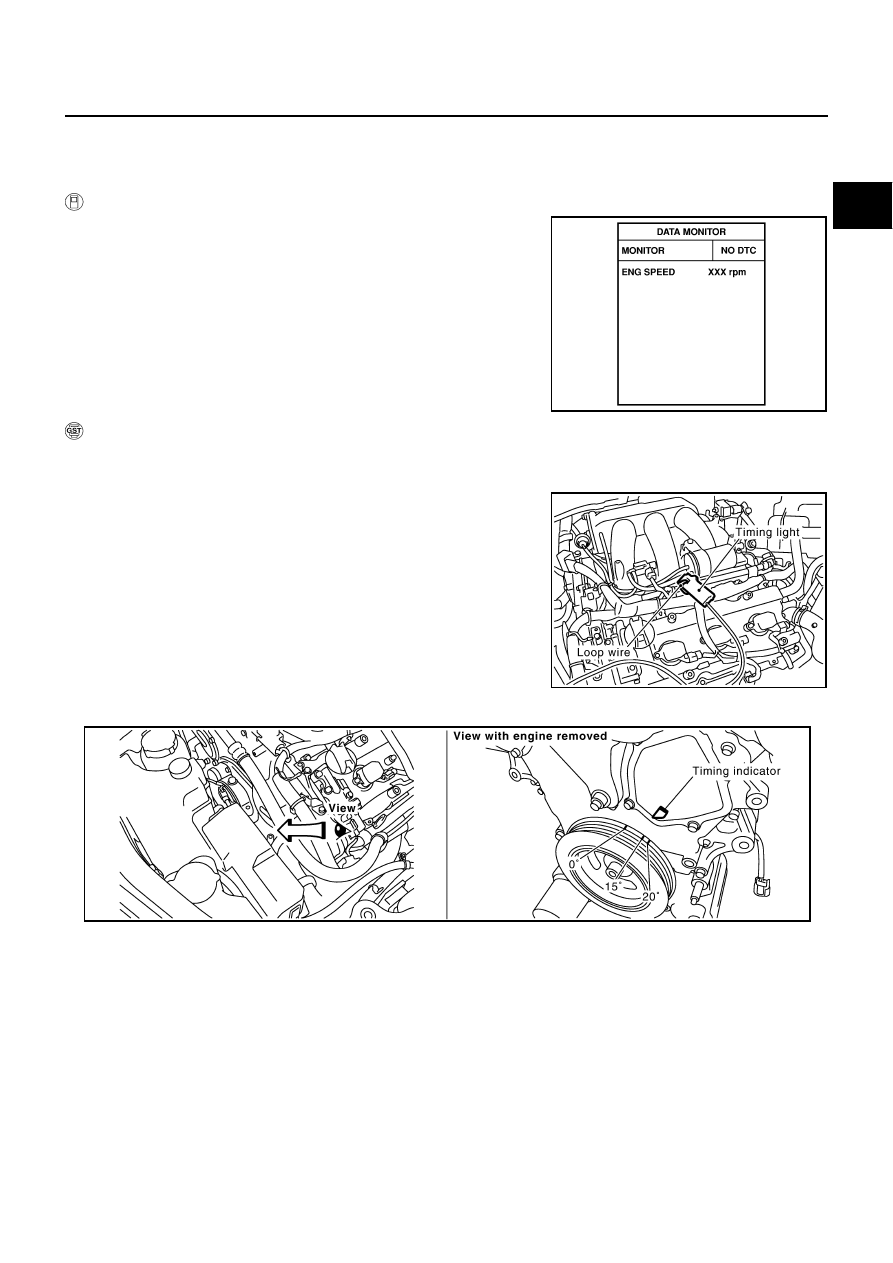Nissan Murano Z50 (2004 year). Manual - part 70

BASIC SERVICE PROCEDURE
EC-31
C
D
E
F
G
H
I
J
K
L
M
A
EC
Revision: 2004 November
2004 Murano
BASIC SERVICE PROCEDURE
PFP:00018
Idle Speed and Ignition Timing Check
ABS004AG
IDLE SPEED
With CONSULT-II
Check idle speed in “DATA MONITOR” mode with CONSULT-II.
With GST
Check idle speed with GST.
IGNITION TIMING
1.
Attach timing light to loop wire as shown.
2.
Check ignition timing.
SEF058Y
PBIB1374E
PBIB1382E